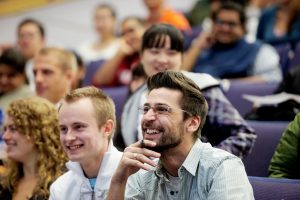Years ago, the New Statesman used to run weekly literary competitions. One of the best was the competition to write new proverbs – and a collection of these was published under the wonderful title provided by one of the winning entries, ‘Never Rub Bottoms with a Porcupine’. The anthology included such classics as ‘it’s an empty seat that’s never sat on’, ‘the centre is to the left of the right’ and the thundering ‘he digs deepest who deepest digs’. Each of these works because it’s simultaneously profound sounding but really simply enunciates a blindingly obvious truism.
Proverbs – old or new – come in handy when times are challenging [‘it’s an ill wind’] or confusing [‘may you live in interesting times’], or changing fast [‘the more things change, the more they stay the same’]. And things are – as I wrote in my New Year blog – changing fast in universities at the moment. A new regulator replacing the old funding council, a new minister, a review of finance, the Teaching Excellence Framework. A good deal of this is geared around the policy aspiration to ‘put students at the centre’, which could be another of those proverb-like phrases – saying something powerful, but ultimately saying it as a truism. If students aren’t at the centre of universities, I don’t know what is: as the first Vice-Chancellor I worked closely with didn’t tire of saying – ‘without the students, none of us would be here’.
I chaired the Teaching Excellence Framework last year, and am about to embark on the assessment process this year – last year we assessed teaching and its outcomes in 250 universities, colleges and alternative providers and this year we will be assessing about a further 120, drawing on a range of quantitative metric data, contextual information and provider submissions. At the same time, the 2018 National Student Survey is about to open at Sheffield Hallam, an online questionnaire which will ask students to make an assessment of their experience across the full range of teaching and learning, assessment and feedback, library and resources, student support services and the students’ union. The Higher Education Statistics Agency is running its most recent Destinations of Leavers from Higher Education (DLHE) survey looking at the employment of 2017 graduates. There’s increasing policy interest in LEO – the Longitudinal Education Outcomes data – which is derived from data linkage across the HESA dataset and the HMRC tax dataset to provide long-term data on employment and earning of graduates several years ago. The 2018 NSS and DLHE will, in turn, feed into the metrics for the 2019 Teaching Excellence Framework.
This is a massively complex, and rapidly-changing data landscape for higher education students, and it has – in the grand scheme of things – developed very quickly. It’s no doubt making anyone who works (or leads) in higher education infinitely more data-savvy than they ever were in the past. The challenge, of course, is – in the title of Nate Silver’s absorbing book on using and abusing social statistics – to distinguish between ‘The Signal and the Noise’, to understand what the real picture is, what matters to students and what actions to take as a result. Here at Hallam we have a superb data analysis team, and the range and quality of the information we can pull together on students is something which increasingly features in decision-making.
There is a line of criticism of this data landscape which is that for all the data, we don’t necessarily ‘know’ more about our students – that survey data, for all its range and volume is more noise than signal, and that real quality is about what goes on in seminar rooms and laboratories, in libraries and lecture rooms, on placement and in study groups. I’m sure the final part of that sentence is true, but I don’t go along with the first part. My experience chairing the TEF last year was telling. The most impressive submissions were simply those who understood their students best and did so by engaging students at every level of the university; I’ve written about this since the TEF2 results were published and talked about an ’embedded culture of engagement at every level’. I don’t believe you get to that simply through the NSS, DLHE and LEO – and so on – but, equally, I don’t believe that you get to it without a solid underpinning of data and the ability to use it, honestly and openly.
As we move into 2018 NSS, engaging students should be our watchword. If ‘putting students at the centre’ can sometimes sound as truistic at ‘he digs deepest, who deepest digs’, engaging students should never be a pat truism: it should drive the way we plan, teach and assess, the way we help our students to prepare for what comes next, the way we help them navigate their studies. But (a useful piece of advice, of course), don’t rub bottoms with a porcupine.
